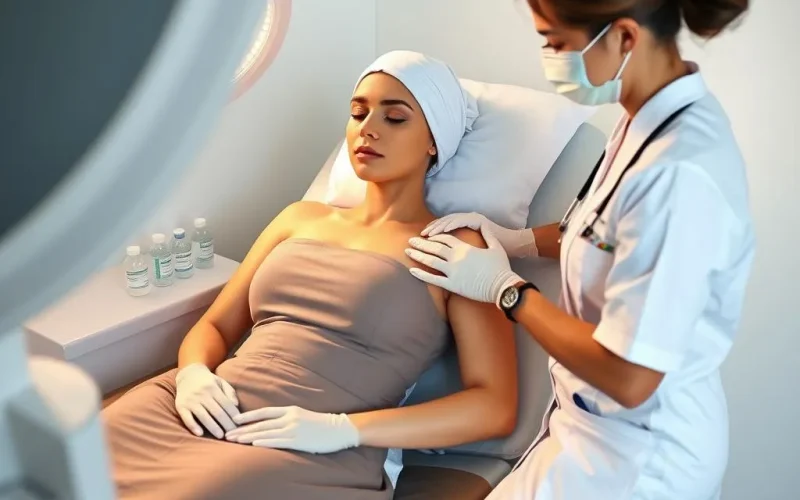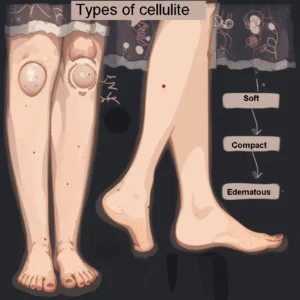

Post-Surgery Massage Questions
Post-Surgery Massage Questions: Discover the Top Questions Everyone Is Searching For
Post-Surgery Massage Questions are becoming increasingly common among patients undergoing cosmetic or reconstructive surgery. For this reason, it is essential to understand how these massages can directly impact recovery. In fact, these therapies not only help speed up the recovery process but also minimize complications that could arise if proper care is not followed.
Furthermore, with the growing popularity of these types of procedures, concerns are also increasing. Therefore, in this article, we will answer the most common questions clearly, usefully, and with up-to-date information. This way, you can make informed decisions about your health and feel more confident during the process.
1. What are postoperative massages?

Postoperative massages consist of therapeutic techniques applied after surgery. Their main objective is to improve circulation, reduce inflammation, and prevent fibrosis, i.e., the formation of hard tissue or internal scarring. Furthermore, by incorporating methods such as manual lymphatic drainage, these massages directly stimulate the lymphatic system, facilitating the elimination of toxins and accumulated fluids.
However, it is essential that they be performed by a trained professional. When performed by someone inexperienced, they increase the risk of complications during recovery. Therefore, it is always recommended to go to specialized centers where the staff has solid knowledge of postoperative techniques.
2. Why are massages important after surgery?
The most important reason why post-surgical massages are recommended is that they help optimize the aesthetic results of the procedure. They also offer essential medical benefits that facilitate the patient’s full recovery. These include:
- Pain reduction.
- Reduction of bruising and edema.
- Prevention of encapsulation (in surgeries such as liposuction or implants).
- Stimulation of tissue oxygenation.
As a result, when these massages are properly integrated into the recovery plan, they accelerate the return to daily activities and significantly improve quality of life.
3. Frequently Asked Post-Surgery Massage Questions
One of the most frequently asked questions about postoperative massages is: when should I start? Ideally, according to specialists, you should wait 48 to 72 hours after surgery, as long as the surgeon approves it. Below, we answer other common questions:
- Do massages hurt?: Generally, they shouldn’t cause pain. However, if they hurt, it may not be being performed correctly.
- How many sessions do I need?: It depends on the type of surgery. On average, between 5 and 10 sessions are recommended, although this may vary depending on the case.
- What happens if I don’t get massages?: You could experience fluid retention, hardening of the area, and a less satisfactory aesthetic result.
In other words, having this information will help you make better decisions about your recovery.
4. Who should perform postoperative massages?
This type of therapy should be performed exclusively by physical therapists or massage therapists certified in post-surgical techniques. Furthermore, the practitioner’s experience directly influences the results obtained. For this reason, avoid centers that lack specialized personnel.
In fact, an inadequate massage could lead to complications such as excessive pain, tissue displacement, or chronic inflammation. Therefore, always ask for referrals or check the opinions of other patients before starting any treatment.
5. Benefits of Postoperative Massages in Recovery
The benefits of this therapy go far beyond the physical aspect. These are some of the improvements patients report when integrating massages into their healing process:
- Improved lymphatic system and circulation.
- Increased skin flexibility.
- Lower risk of fibrosis.
- Faster and safer recovery.
- Greater overall well-being.
Furthermore, massages help reduce anxiety, which also positively impacts the healing process, both physically and emotionally.
6. Care before and after each session
For massages to be truly effective, it is essential to follow some recommendations. These actions before and after each session ensure optimal results and avoid additional discomfort.
Before the session:
- Do not apply creams or oils to the area.
- Drink enough water.
- Wear comfortable clothing.
After the session:
- Avoid physical exertion.
- Stay hydrated.
- Apply cold locally if there is sensitivity.
As you can see, these precautions are simple, but they make a big difference in the results.
7. Post-Surgery Massage Questions for cosmetic procedures
Some questions about postoperative massages are specific to the type of surgery. Here are the most common ones for each procedure:
Liposuction:
- When should massages be started?: Between 48 and 72 hours after surgery.
- How many massages are recommended?: At least 10, spread over a month.
Abdominoplasty:
- Can I receive massages if I have drains?: Only if the surgeon approves and under medical supervision.
- What type of massage is best?: Gentle, controlled lymphatic drainage.
Breast augmentation:
- Can the implants move?: If performed correctly, there should be no risk.
- Is massage necessary?: In many cases, yes, especially to prevent encapsulation.
This way, you can tailor your treatment to your needs and type of surgery.
8. Checklist: Common Mistakes to Avoid
Below is a list of mistakes patients often make when receiving postoperative massages. Avoiding them can make a big difference in your recovery:
- Starting massages without medical approval.
- Using untrained therapists.
- Not completing the recommended number of sessions.
- Applying excessive pressure at home.
- Not informing the therapist about symptoms such as severe pain or fever.
As a result, avoiding these mistakes is key to ensuring positive progress.
9. Final Recommendations for an Effective Recovery
To achieve a safe and successful recovery, keep these essential tips in mind:
- Follow medical instructions carefully.
- Seek certified professionals.
- Be consistent with your sessions.
- Accompany massages with good nutrition and hydration.
- Listen to your body and report any discomfort.
Of course, every body is different, and the process may vary depending on your health status, type of surgery, and individual response. However, these steps will help you stay on track.
Conclusion: Post-Surgery Massage Questions
In short, questions about postoperative massages are completely normal and necessary to ensure a successful recovery. Knowing how, when, and why to perform these massages makes the difference between achieving a successful result or facing complications.
The most important thing is to seek reliable information, consult trained professionals, and maintain an active and responsible attitude throughout the process. Remember that postoperative massages not only complement your treatment but also play an essential role in your healing.
Explore other related articles by clicking here and Visit the official website here




